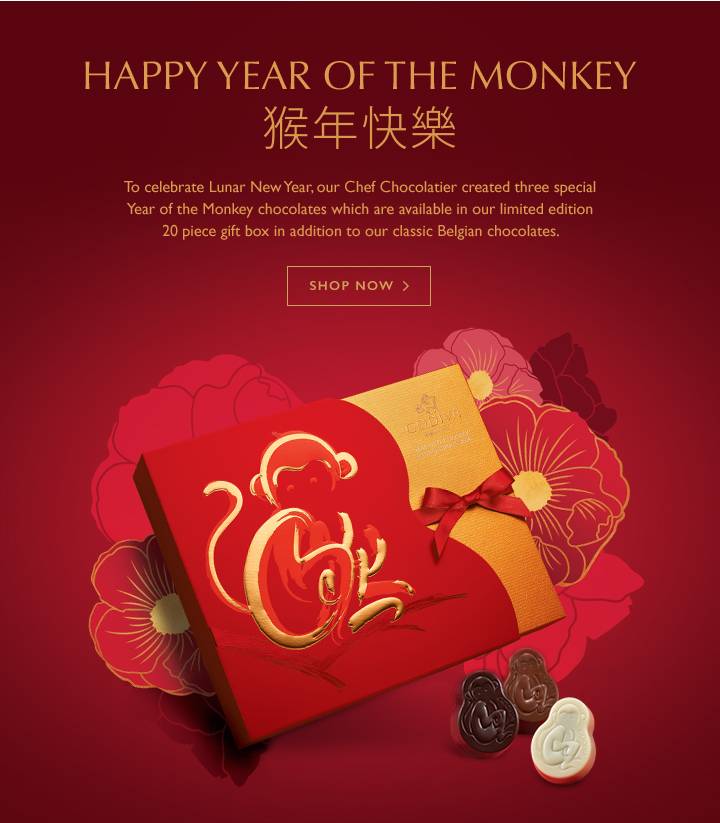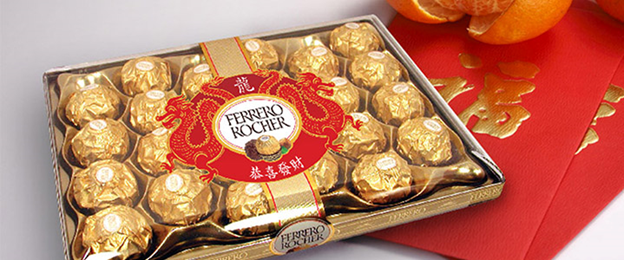
Without doubts, chocolate in China is a booming market and more and more brands are investing to catch the attention of Chinese middle class consumers. At almost all Chinese weddings, guests are given candy, often in beautifully packaged boxes and personalized to match a couple’s taste. These boxes not only add to the festive atmosphere at each ceremony but also represent happiness and sweetness to the newlyweds’ guests. This has long been a tradition in China. In the past, people chose hard candy or jellied fruits as gifts. But today, especially among young couples, people are adding chocolates in the candy packages.
Chinese chocolate market is still on its early stage. In the book ‘Chocolate Fortunes: The Battle for the Hearts, Minds and Wallets of China’s Consumers’, author Lawrence Allen writes: “Almost none of them (Chinese) had ever eaten a piece of chocolate. They were, to coin a phrase, ‘chocolate virgins’.”

Beside challenges, the chocolate market in China has boomed since the 1990s, as leading companies such as European Ferrero and Godiva entered the country in their quest to turn locals into chocoholics. In China, which has a population of about 1.5 billion, the chocolate market is worth $7 billion, offering huge potential and one of the key of success was changing marketing strategies with better culture environment understanding. Nowadays, Western manufacturers are aware of this preference and are competing to sell their products with localized marketing strategies.
Most chocolates bought in China are for gifts or ceremonial use, such as wedding candy, rather than for daily snacks. Chinese need gifts for numerous traditional occasions, for example at Lunar New Year (a moment when people exchange greetings by offering little treats), but small gifts are also presented to teachers, parents-in-law, those who are ill, or when you visit people in their homes. For young Chinese men, chocolates, especially luxury ones that are delicately packed, have become a “must” to show their love to their girlfriends.
Let’s take Ferrero. Golden Ferrero Rocher chocolate pralines ideally meet Chinese consumers’ requirements for a good gift – a high quality, well-known brand and exquisite packaging which, on top of all this, is considered to bring good luck in Chinese culture thanks to the round shape and golden colour. Not only is Ferrero Rocher’s packaging simple, but Chinese culture also has an affinity toward gold: it’s a sign of prosperity and wealth, which are things Chinese always wish upon other people.

Quality and exclusivity are important too. Middle-class consumers who want high quality and are happy to pay for it are choosing luxury chocolate brands such as Godiva. Belgian maker Godiva had about 100 retail outlets in China at the end of 2018, and plans to triple that number by next year. All its stores are designed in a luxurious style reminiscent of a jeweller’s shop. This is how smaller boutique chocolatiers have emerged in first-tier cities. Godiva’s premium selection of gift-wrapped chocolates saw its revenue in China in 2017 rise by 193% to $62 million.
Chen Yiming, a food industry analyst, said that when it comes to giving presents, it is always important for Chinese that the recipient recognizes that they are of high quality, have a certain material value and match the occasion in terms of what they symbolize. Today, the new generation of consumers has a much deeper understanding of chocolate, including its taste, manufacturing process and culture. This knowledge will probably lead to an increase in chocolate consumption and see some consumers turning to more high-end products, Chen added.
Nowadays it is not enough to have a name to emerge unscathed from a crisis. Globalization has created unique challenges for modern marketing, as companies must adapt to the completely different tastes and cultures of other civilizations. Among all the mistakes done by foreign enterprises, arrogance and lack of local understanding have been the major issues that led the Chinese to boycott their products. Moreover, online communities are a great resource for brands, they contribute to increasing visibility, but they can become the worst enemy when not respected.
Together with that, the new generation of Chinese are not only perceiving the idea of eating chocolate regularly seeing more chocolate available. They are directly influenced when they go abroad and delve into different experiences. They travel much more now and they bring new habits along with them.

| Cookie | Duration | Description |
|---|---|---|
| cookielawinfo-checkbox-analytics | 11 months | This cookie is set by GDPR Cookie Consent plugin. The cookie is used to store the user consent for the cookies in the category "Analytics". |
| cookielawinfo-checkbox-functional | 11 months | The cookie is set by GDPR cookie consent to record the user consent for the cookies in the category "Functional". |
| cookielawinfo-checkbox-necessary | 11 months | This cookie is set by GDPR Cookie Consent plugin. The cookies is used to store the user consent for the cookies in the category "Necessary". |
| cookielawinfo-checkbox-others | 11 months | This cookie is set by GDPR Cookie Consent plugin. The cookie is used to store the user consent for the cookies in the category "Other. |
| cookielawinfo-checkbox-performance | 11 months | This cookie is set by GDPR Cookie Consent plugin. The cookie is used to store the user consent for the cookies in the category "Performance". |
| viewed_cookie_policy | 11 months | The cookie is set by the GDPR Cookie Consent plugin and is used to store whether or not user has consented to the use of cookies. It does not store any personal data. |